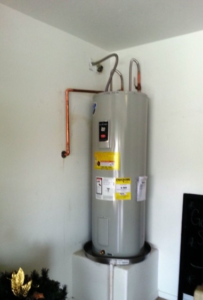Landscapers design and maintain outdoor areas like backyards, gardens, and parks. They can work in both rural and urban green spaces, as well as in commercial settings.
In four tense and surreal episodes, Landscapers layers enigmatic style onto a chilling true story. Olivia Colman and David Thewlis ground the show in their outstanding performances. Contact Landscapers Baltimore now!

Landscapers use their knowledge of horticulture and design to create outdoor spaces that meet the needs of clients. They may work on commercial or residential properties, or public areas such as parks and gardens. Depending on the scope of the job, landscapers can offer a range of services from consultation to installation.
When designing a garden, landscapers must consider a variety of factors including plant texture, form and color. Texture refers to the roughness of the surface, while form is determined by the shape of each individual plant. A landscaper must also balance these elements to create a cohesive and balanced garden. For example, the textured surface of a rock garden can balance the smooth forms of plants like lilyturfs and grasses.
Theme can also play a large role in the success of a landscape project. A theme can guide a landscaping designer’s choice of plantings, materials and construction methods. Some common themes include formal, informal, and naturalistic styles. Themes can also be defined by style of architecture or the type of site where the landscaper works. For example, a mountain landscape will require plants that thrive in harsh conditions and are capable of withstanding extreme weather, while a sea-level landscape is best suited for tolerant species.
Once the landscaper has completed a thorough site analysis, he can begin his work on a detailed landscape plan. The plan will outline the layout of each component, including plantings and any hardscaping features such as paving stones or patios. The landscaper will then submit the plan to the client for approval. The client can then make changes or additions to the original design as needed.
Landscapers often specialize in either softscape or hardscape, although many choose to focus on both. Softscape refers to the living elements of a garden, such as plants and trees, while hardscape refers to non-living elements, such as paved surfaces, walls, and water features. Landscapers may also offer stand-alone design consultations, which can be an excellent source of revenue and a good way to build a customer base.
The qualifications that a landscaper must possess to obtain a job vary by employer and industry. Some employers prefer to hire those with a college degree in horticulture or landscape design, while others simply seek candidates who have related experience and can perform the necessary duties. Those who wish to become certified as a landscaper can do so through their local trade association or vocational school.
Installation
Once a landscape design is approved, the landscaper begins implementing the different elements of the outdoor space. This can include planting trees and shrubs, installing irrigation systems, laying down sod or other ground cover, building hardscaping elements, such as patios and walkways, and more. It also involves removing or controlling pests that might damage the plants and other elements of the landscape.
When choosing a landscaper, it’s important to look for someone who is qualified and experienced. They should be able to understand the client’s goals and create an outdoor space that suits those needs. They should also be able to communicate effectively with the client, provide updates on the progress of their work, and address any concerns or issues that might arise.
Some landscapers specialize in specific types of landscaping, such as gardens or water features. Others may focus on a particular style, such as contemporary or tropical. They should be able to find the right balance between the hardscape (structures) and softscape (plants) for each project.
Landscaping can improve the appearance and value of a property, as well as add functionality, such as creating outdoor living spaces or controlling erosion. It can also be used to increase privacy and security by separating areas from neighbors. In addition, it can be used to promote sustainability by reducing the need for watering and fertilizers.
In some states, landscapers are required to obtain a license before working on any projects. In Hawaii, for example, a landscaper must have a C-27 Landscaping Contractor license and a C-27b Tree Trimming and Removal Contractor license. They must also pass an exam and have insurance coverage, including liability and workers’ compensation.
Landscapers often work outdoors in all kinds of weather, so they should be comfortable working in extreme temperatures and with a variety of equipment. They also need to be able to lift heavy objects and stand or kneel for long periods of time. They should also be able to work independently or with a team. They may need to travel between jobs, so they should be able to drive a truck or van and have a valid driver’s license.
Maintenance
Landscaping work can be strenuous, and landscapers must maintain their health and safety. This includes wearing protective equipment such as gloves, eyewear, and a hard hat. It also involves proper lifting techniques to reduce the risk of back injuries. For example, a landscaper should use the leg muscles instead of the back to lift heavy materials. Moreover, landscaping workers must maintain their equipment and vehicles to ensure that they are working properly.
A landscaper should have a standard toolkit to carry out maintenance tasks on their projects, including a shovel, rake, and hand pruners. They should also keep their tools oiled, as this keeps them working effectively and protects them from corrosion. In addition, they should have an emergency kit that includes first aid supplies.
Some landscapers offer maintenance services only, while others provide full-service landscaping. Full-service landscaping companies can revamp the entire outdoor space and install new outdoor elements such as fire pits, retaining walls, and patios. They can also help homeowners with their yard design and plant trees, shrubs, and flowers.
Landscapers should maintain a high level of professionalism in their work, especially when dealing with clients. They should have experience working with a variety of clients and be able to understand their specific needs. Additionally, they should be able to meet the budget and timeline of the client.
In addition to providing regular lawn care, landscapers can also add curb appeal to their residential or commercial properties by trimming bushes, removing dead plants, and planting new flowers or shrubs. They can even help with weed control and pest management. A well-maintained landscape is an excellent way to increase the value of a home or business and attract potential tenants.
When choosing a maintenance service, look for a company that has a good reputation in the area. You can read online reviews and ask for references to gauge their work quality and customer satisfaction. In addition, they should have a detailed quote that includes labor and material costs. This will allow you to compare quotes from different companies and negotiate a better price.
Sales
Landscapers make their money not only by providing services to clients, but also through sales of landscaping materials. This can include hardscape items, such as decks, patios and pools, or plant materials such as shrubs, trees and flowers. They may be employed by landscaping and garden centers, lawn service establishments or greenhouses, as well as public parks and gardens, golf courses and private homeowners. Depending on the size of their company, they may have sales personnel or be self-employed.
Landscaping is a seasonal business, and peak season varies by location. Those who work in residential areas can often expect to see more business in spring and summer than other times of year. This makes it important for landscapers to be prepared with marketing and other sales tools that can help them capture as much of the market as possible when demand is highest.
It is important for a landscaper to be able to explain the full scope of his or her work to potential customers. This includes describing what materials are needed, the costs involved and the time frame for completion of the project. It is also important to be able to answer any questions that a customer might have.
The key to a successful landscaping business is the ability to convert leads into paying customers. One way to do this is through lead scoring, which is a process by which businesses prioritize prospects based on their likelihood of converting. This allows businesses to focus their resources on generating new leads, converting them into sales and ultimately growing their bottom line.
Keeping track of prospects can be challenging, especially when the workday is busy. Using a CRM (customer relationship management) software, such as HubSpot, can simplify the process. With a mobile app, it’s easy to scan a business card and have it automatically added as a contact in your database, where you can then easily email, call or text the prospect. This saves you the time of manually entering information into your phone or computer, and it ensures that you never forget to follow up with a prospective customer.



